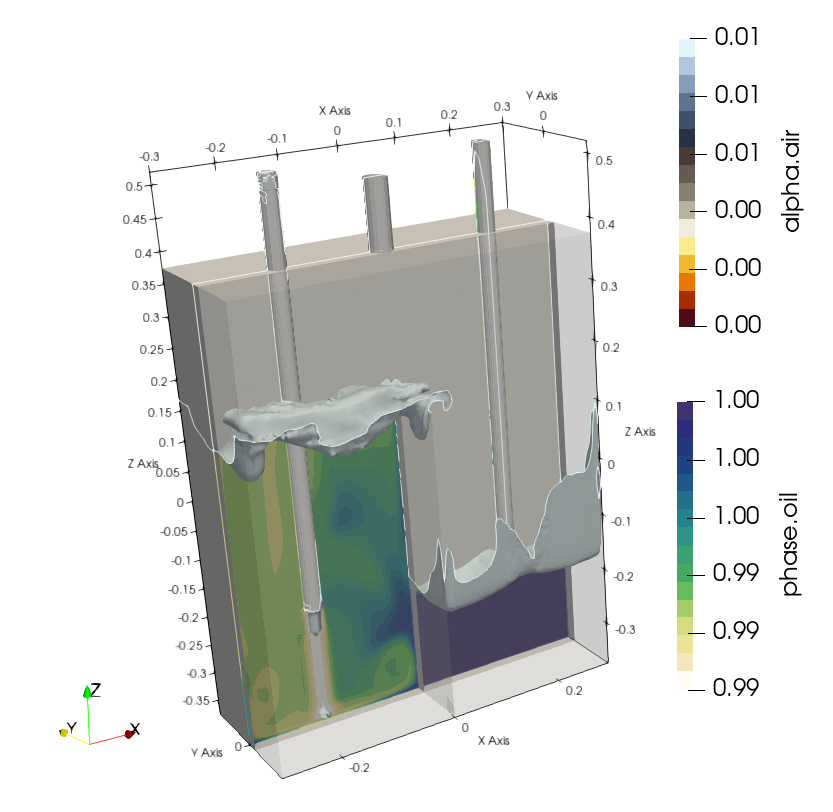Month: January 2022
-

Electronic cooling simulation using OpenFOAM
Space limitations and high power supply ultimately lead to innovativ cooling design for a wide range of PCB. The arrangement of the power supply’s, heat sink dimensions and design of the outer housing become more important. Thermal simulations within in the design process of PCB help to overcome overheating problems in the later production stage. …
-

Degassing simulation using OpenFOAM
Space limitations and high cost pressure ultimately lead to hydraulic tanks becoming increasingly complex and smaller. This leads to a dramatic reduction in air separation in the tank – and thus to an increased amount of free air in the hydraulic system. In hydraulic systems, free air is still a technical challenge today. As long…
